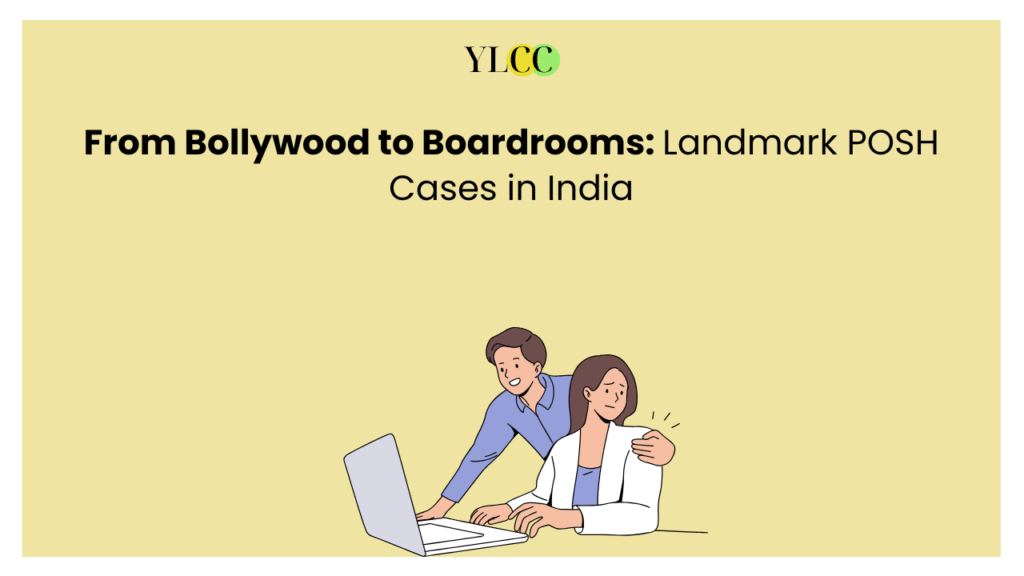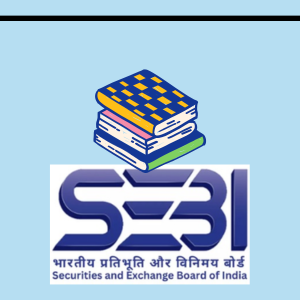
Introduction
The workplace sexual harassment in India has undergone a profound transformation, moving to a regime governed by a comprehensive, yet imperfect, statutory framework. This article provides an exhaustive analysis of this evolution, tracing the journey from foundational judicial precedents to the modern challenges highlighted by high-profile cases in both the cinematic and corporate spheres.
The report identifies the #MeToo movement in India, ignited by actress Tanushree Dutta’s accusations, as a significant social catalyst that brought systemic issues into the public consciousness. Through an in-depth review of cases, including the high-profile sagas involving Tanushree Dutta and Nana Patekar, Vinta Nanda and Alok Nath, and Vikas Bahl and Phantom Films, the article demonstrates how deep-seated power dynamics, procedural flaws in redressal mechanisms, and a culture of complicity undermine the purpose of the Sexual Harassment of Women at Workplace (Prevention, Prohibition and Redressal) Act, 2013 (“POSH Act”).
Similarly, an examination of corporate cases, from the early reckoning of Phaneesh Murthy at Infosys to the more recent and legally clarifying HCL Technologies ruling and liability issues in the gig economy (Uber, Dunzo), reveals a pattern of evolving corporate accountability and a judicial push for a more victim-centric legal standard.
The central findings of this analysis point to a significant gap between legislative intent and practical implementation. While the POSH Act is a commendable piece of legislation, its effectiveness is consistently hampered by weak Internal Complaints Committees (ICCs), the rigid approach of the legal system to evidence and reporting timelines, and a cultural hierarchy that creates a fear of retaliation. The emergence of the #MenToo counter-movement further complicates the discourse.
The Genesis of Indian Workplace Harassment Law
The journey toward a formal legal framework for addressing workplace sexual harassment in India is inextricably linked to the tragic and catalytic case of Bhanwari Devi. A social worker in Rajasthan, Bhanwari Devi, was gang-raped in 1992 as a brutal act of retaliation for her efforts to prevent a child marriage in her village. The incident, far from being a private matter, was a direct consequence of her professional duties as a saathin (social worker) and her intervention in a deeply entrenched cultural practice.
The subsequent legal proceedings laid down the failure of the Indian justice system. The accused, who belonged to a powerful and affluent caste, were acquitted by the Rajasthan High Court, a verdict that was widely seen as a mockery of justice.
The injustice of Bhanwari Devi’s case highlighted the vulnerability of working women in the absence of specific legal safeguards. It became clear to women’s rights groups and activists that relying solely on existing criminal law provisions was insufficient to protect women from violence and harassment in the course of their work. Recognising this void, a Public Interest Litigation (PIL) was filed in the Supreme Court of India under the banner of “Vishaka and others v. State of Rajasthan (1997) 6 SCC 241” seeking a legal mechanism to address the systemic issue of workplace sexual harassment and to protect women’s fundamental rights to equality, life, and dignity. This case laid down the Vishakha Guidelines.
The POSH Act, 2013
The Vishaka Guidelines, while transformative, were a judicial remedy, not a formal statute. The need for a dedicated, comprehensive law led to the enactment of the POSH Act, which officially replaced the guidelines with a legislative framework. The POSH Act was designed to provide a “clear and comprehensive framework” for addressing sexual harassment.
The #MeToo Movement in India
The Social and Digital Revolution
The international #MeToo movement began to gain prominence in India in 2018 and found its most potent expression within the entertainment industry. The catalyst was the public accusation by actress Tanushree Dutta against veteran actor Nana Patekar, an allegation she had first made a decade earlier. This moment, likened to the Harvey Weinstein case in the United States, sparked a “deluge of other allegations” from women across various sectors, including news media, films, and politics.
Prominent figures such as Alok Nath, M.J. Akbar, and Vikas Bahl were publicly named and shamed, an unprecedented phenomenon in the country. For the rest of 2018, the issue of sexual harassment dominated media attention, transforming from a hushed, private issue into a national conversation.
The Role of Social Media in Empowering Survivors
The most important factor in the movement’s momentum was the role of social media. Platforms like Twitter became an “alternative space” for survivors to share their experiences and receive solidarity, bypassing India’s often hostile legal institutions and rigid social hierarchies.
The power of this digital forum was clearly demonstrated in the Tanushree Dutta case. Her initial 2008 complaint to the Cine & TV Artists Association (CINTAA) was ignored, with no action taken as the body considered it a criminal matter. Ten (10) years later, her public statements on a television channel and the subsequent social media outcry compelled CINTAA to apologise for its inaction and led to her filing a First Information Report (FIR) with the police.
For many survivors, especially in an industry where power dynamics are acutely pronounced, the objective became not just legal victory but public vindication and accountability. The dissolution of Phantom Films following allegations against Vikas Bahl and the resignation of politician M.J. Akbar are powerful examples of social pressure achieving a form of justice that might not have been possible through formal legal channels alone. This informal mechanism, while powerful, also introduced challenges related to due process and the potential for unverified claims, thereby, creating a tension that would become a key theme in the legal battles that followed.
Landmark Cases in the Entertainment Industry
The Tanushree Dutta-Nana Patekar Case
The accusations made by actress Tanushree Dutta against Nana Patekar in 2018 served as the primary catalyst for the Indian #MeToo movement. Dutta alleged that Patekar had sexually harassed her during the shooting of a song for the film “Horn OK Pleassss” in 2008, claiming he acted inappropriately and insisted on introducing intimate steps into the choreography against her wishes. Despite her objections and the subsequent public ruckus, her 2008 complaint was not pursued. A decade later, her renewed accusations sparked a national conversation.
Metropolitan Magistrate Court, Andheri in Mumbai dismissed the case, citing a police closure report that found no concrete evidence against Nana Patekar. More importantly, the court ruled that the case was “time barred” as it fell outside the three-year limitation period under the Code of Criminal Procedure (CrPC) (now Bharatiya Nyaya Sanhita, 2023) for the alleged offence.
The Vinta Nanda-Alok Nath Case
The accusations of veteran writer-producer Vinta Nanda against actor Alok Nath offered another powerful example of the #MeToo movement’s impact. Nanda’s detailed account alleged that Nath, known for his “sanskaari” (cultured) on-screen image, had sexually violated her almost two decades ago. Her claims were corroborated by other women, including actresses Navneet Nishan and Sandhya Mridul, who also accused Nath of inappropriate behaviour.
The case powerfully illustrated how a carefully curated public image can serve as a shield against serious allegations, highlighting the deep cultural resistance to holding powerful figures accountable. Nath’s dismissive public response, stating “it must have happened, but someone else would have done it” and that “we only have to hear to women’s stand because they are considered weak”.
He also filed a civil defamation suit against Nanda, demanding a written apology and a token compensation of Re 1. This symbolic gesture was not a genuine pursuit of financial damages but a strategic legal maneuver to intimidate the accuser and reassert his reputation by forcing a public retraction. The case demonstrates that in high-profile situations, the battle for justice is often waged not in the courtroom but in the court of public opinion, where reputation, celebrity status, and patriarchal norms are the primary weapons. The lack of a clear legal outcome in a case of this magnitude further underscores the difficulty of translating social momentum into judicial accountability, especially when the accused can use their legal and financial power to prolong and complicate the process.
The Vikas Bahl-Phantom Films Saga
The allegations against filmmaker Vikas Bahl by a former employee of Phantom Films represented a critical examination of corporate complicity within the entertainment industry. The woman’s initial allegations from 2015 resurfaced in 2018 during the #MeToo movement, leading to the dissolution of the production company, Phantom Films. Bahl’s partners, Anurag Kashyap and Vikramaditya Motwane, publicly sided with the survivor, leading Bahl to file a ₹10 crore defamation suit against them.
The subsequent ICC inquiry into the allegations exposed a systemic failure where the procedural mechanisms of the POSH Act were seemingly weaponised to manipulate the outcome. The investigation was set up at Bahl’s request, a highly unusual practice without any legal provision for an accused person to initiate a complaint against themselves.
The committee failed to interview key witnesses, including actresses Kangana Ranaut and Nayani Dixit, who had also publicly accused Bahl of misconduct. The final report, which quickly cleared Bahl of all charges and led to his reinstatement as the director of a major film, stated that the inquiry was conducted to address the “pendency of which continues to affect his mental, professional career and reputation”.
This reveals a deep-seated conflict of interest where a company’s financial and reputational health can be prioritised over a survivor’s legal recourse. The case highlights that simply having an ICC is not enough; the committee’s integrity, independence, and procedural fairness are paramount.
Insights from the Hema Committee Report
Beyond individual cases, reports from within the film industry have confirmed the existence of a pervasive and deeply embedded culture of harassment. The Hema Committee, formed in Kerala in 2017 to investigate the working conditions for women in the Malayalam film industry, presented a detailed report that transcended individual accusations to a broader systemic analysis. The report’s findings included widespread sexual abuse, the existence of a “mafia” that controls jobs and requires women to exchange sexual favours for opportunities, and the prevalence of inadequate facilities, poor working conditions, and cyberbullying for those who refuse demands Th.e report pointed out that this culture of exploitation is not limited to a few bad actors but is a fundamental part of the industry’s professional landscape.
The Hema Committee’s findings, while specific to Malayalam cinema, resonate with challenges faced across many other industries in India, revealing that the problem is not isolated to a few individuals but is deeply rooted in professional culture.
The fact that other film industries, such as Tamil, Telugu, and Bengali, are considering establishing similar committees underscores a shared, universal problem. This demonstrates that while the POSH Act mandates a formal complaints mechanism, it is a necessary but insufficient tool.
Landmark Cases in Boardrooms
The Phaneesh Murthy-Infosys Case
The case of Phaneesh Murthy, a rising star at Infosys in the early 2000s, stands as an important, pre-POSH Act landmark in corporate India. Murthy was accused of sexual harassment by his female secretary, Reka Maximovitch, an allegation that was ultimately settled out of court for a reported $3 million.
What makes this case particularly significant is Infosys’s public stance. The company refused to contribute any money to the settlement, though their insurers paid a portion, and explicitly stated that it had “retained all rights” against Murthy. This public and legal distancing from a high-profile executive demonstrated an early, albeit unofficial, precedent for corporate accountability in India.
This case occurred long before the POSH Act and the #MeToo movement, yet it signalled a shift in how major Indian corporations would handle such scandals. Infosys, a company that was heavily reliant on its international reputation, chose to prioritise its institutional image over protecting a senior leader. This early corporate reckoning demonstrated that reputational damage and financial liability could be significant, even without a formal legal framework, and that market forces could act as a form of deterrent and enforcement. The fact that Murthy was later fired from his next company, iGate, for a similar allegation of failing to disclose a relationship with a subordinate, further highlights how an established pattern of misconduct can persist across different employers, reinforcing the need for continuous vigilance and accountability.
The HCL Technologies Case
A more recent and legally significant case that has impacted corporate compliance is the Madras High Court’s ruling in HCL Technologies Ltd v. N. Parsarathy (W.P. No.5643 of 2020). The court reinstated the findings of the Internal Complaints Committee (ICC), which had found an HCL manager guilty of inappropriate behaviour, including undue physical proximity and inappropriate remarks.
Prior to this judgment, the legal defence for an accused individual often hinged on claiming a lack of harmful intent, arguing that their actions were misunderstood or a joke. By ruling that “action holds more significance than intent”, the court effectively validated the subjective experience of the victim as the primary measure of harassment.
This interpretation gives ICCs and courts a more powerful and direct standard to apply, and prevents the accused individuals from simply claiming ignorance or a lack of harmful intent to evade responsibility.
Uber, Dunzo, and the Aggregator Economy
The rise of the gig and aggregator economy has introduced new complexities to the concept of the “workplace”. The POSH Act was enacted in 2013, a time when these platforms were still nascent, and subsequent cases have pushed the legal definition of workplace and employer liability to its logical conclusion.
The high-profile case involving Uber in 2017, which led to the resignation of its CEO, and the case of a major Indian food delivery aggregator (Dunzo) are prime examples.
In the Dunzo case, a female customer filed a complaint against a delivery partner, who was not a direct employee but a contractor. A lawsuit was filed against the company for “negligent hiring and alleged sexual harassment”.
The legal implications of these cases are profound. By holding the companies liable for the actions of their delivery partners and drivers, the courts are signalling that corporate responsibility extends beyond the traditional office space and the direct employer-employee relationship.
This is a significant development that adapts a 2013 law to the complexities of the modern economy, ensuring that platforms and aggregators cannot hide behind a “third-party contractor” defence to avoid their duty to provide a safe and harassment-free service environment. The aftermath of these cases often leads to significant policy changes, such as Uber’s adoption of enhanced background checks, anonymous reporting, and a zero-tolerance policy, demonstrating that legal pressure can drive critical improvements in corporate governance.
Other High-Profile Cases
The pattern of high-profile sexual harassment cases in the corporate and public sectors is not limited to the examples discussed above. The case of Tarun Tejpal, Tarun Jit Tejpal v. State of Goa, (2019 SCC OnLine SC 1053), the founder of Tehelka magazine, who was accused of sexual assault and rape by a former colleague during a Goa event. As per the article by India Today, Gopal Kanda, a former Haryana minister, who was charged with abetting the suicide of an air hostess who accused him of sexual harassment, further highlights how power dynamics can influence the vulnerability of victims.
These and other cases, while varied in their specific outcomes, collectively underscore a recurring theme: power and influence, whether in a boardroom, a political office, or a newsroom, can be a major factor in the perpetuation of sexual harassment and the subsequent challenges faced by survivors in seeking justice.
Analysis of Key Themes and Implementation Gaps
| Case | Alleged Perpetrator/Institution | Nature of Allegation | Outcome | Broader Impact |
| Vishaka vs. State of Rajasthan | Feudal patriarchs | Gang rape for activism | Accused acquitted | Led to Vishaka Guidelines (1997), a judicial precedent |
| Tanushree Dutta-Nana Patekar | Nana Patekar | Sexual harassment on set | Case dismissed; time-barred | Catalyst for #MeToo movement; highlighted flawed legal timelines |
| Vinta Nanda-Alok Nath | Alok Nath | Sexual assault and violation | Defamation suit filed | Exposed power of public reputation over legal fact |
| Vikas Bahl-Phantom Films | Vikas Bahl | Sexual assault | “Clean chit” from ICC | Highlighted ICC procedural flaws and corporate complicity |
| Phaneesh Murthy-Infosys | Phaneesh Murthy | Sexual harassment | Out-of-court settlement | Established an early precedent for corporate accountability |
| HCL Technologies | N Parsarathy | Undue physical proximity | ICC findings reinstated | Defined “reasonable woman standard”; intent vs. impact |
| Uber/Dunzo | Delivery partners | Unwelcome sexual advances | Company liable | Expanded definition of “workplace” and employer liability |
Recommendations and Future Outlook
The analysis of landmark POSH cases reveals that while India has a strong legal framework on paper, significant gaps in implementation and cultural readiness continue to undermine its effectiveness. The path forward requires a multi-pronged approach involving legal reform, strengthening corporate governance, and a fundamental cultural shift. The following are some of the recommendations:
(A) Strengthening Corporate Compliance and Governance
For the law to be effective, its enforcement must be rigorous and transparent. The legal framework should impose stricter penalties for non-compliance, with a focus on penalties beyond monetary fines, such as the cancellation of business licenses for repeated violations.
The precedents set by the Uber and Dunzo cases should be codified into law, legally mandating that organisations in the gig and aggregator economy implement comprehensive POSH policies and provide training for all partners and contractors.
Procedural improvements are equally important. Companies must move beyond a check-the-box approach to compliance. The ICCs should be truly independent, with a clear separation from the company’s financial and commercial interests, potentially with a mandatory, third-party oversight body to ensure procedural fairness and transparency. A “zero-tolerance policy” must be genuinely implemented from the top down.
(B) The Need for Legal and Judicial Reform
The legal system must adapt to the realities of a survivor’s journey. The legislative review should extend the statute of limitations for filing sexual harassment complaints, acknowledging that trauma, fear, and professional barriers can delay reporting. The HCL Technologies case, which established the “reasonable woman standard” and the principle that a perpetrator’s intent does not mitigate the harm of a harassing act, should be formally codified into law. This would provide a consistent and powerful judicial precedent for all future cases.
Furthermore, a broader and clearer legal definition of workplace is needed to explicitly include digital, remote, and informal spaces, officially recognising the precedents set by the Uber and Dunzo cases and ensuring that no one is left vulnerable due to an outdated definition of where work happens.
(C) The Role of Awareness, Education, and Cultural Shift
The importance of continuous and effective POSH training for all employees is not just a one-time induction, but a long term training. This training should be tailored to different roles, with a focus on senior management and ICC members, to ensure they understand their legal and ethical obligations.
Public discourse, like that lited by the #MeToo movement, must be encouraged as a vital part of the conversation. These public forums can serve as a powerful check on institutions and individuals who are not held accountable through formal channels. The ongoing conversation must be one that promotes gender sensitivity, dismantles patriarchal hierarchies, and empowers every individual to recognise, report, and stand against harassment.
Conclusion
The journey from a legal void to a formal act and the subsequent societal revolution of the #MeToo movement has been significant. India has a legal framework that is designed to protect women and hold institutions accountable. However, landmark cases from Bollywood and boardrooms continue to reveal critical gaps in its implementation, institutional integrity, and cultural readiness. The fight is not over. The cases analysed in this report show that while progress has been made, the deep-seated issues of power, fear, and institutional failure remain formidable barriers to true gender justice.
A comprehensive, multi-pronged approach, involving legal reform, corporate governance, and a fundamental cultural shift, is the only way to ensure that every Indian woman can work with the dignity and safety promised by the law.
YLCC would like to thank Nikunj Arora for his valuable insights into this article.






